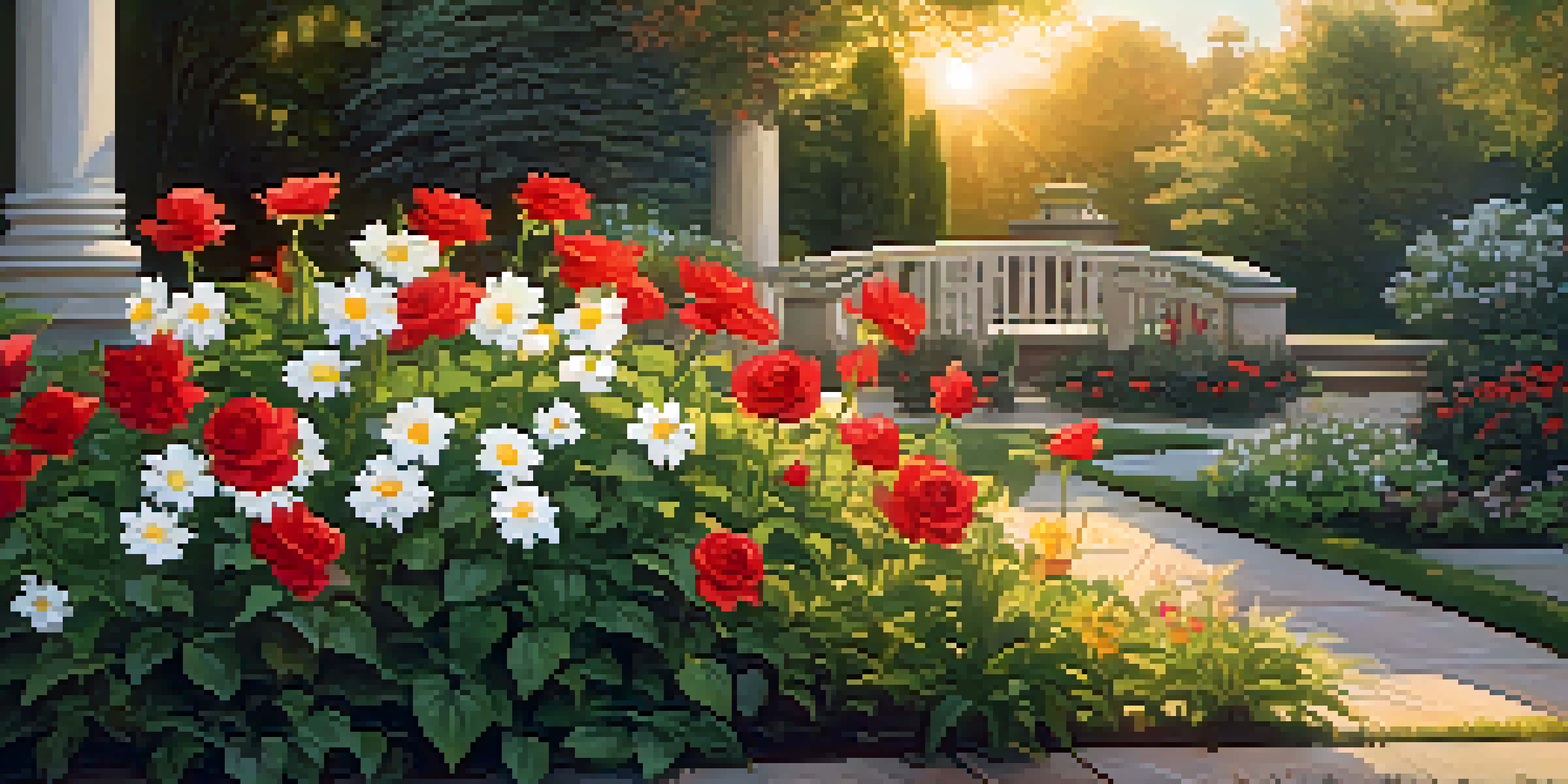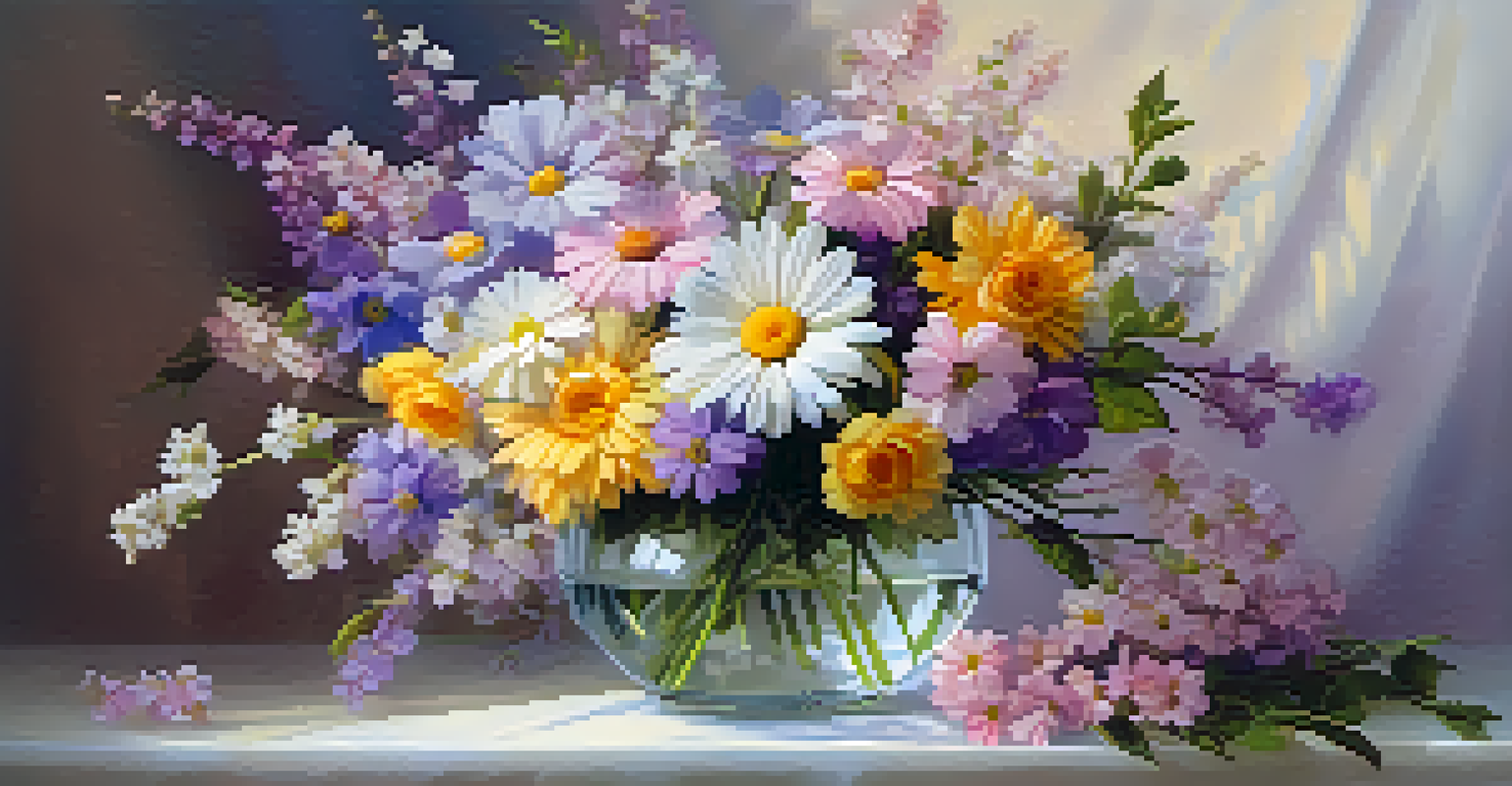The Language of Flowers: Cultural Meanings and Traditions

What is the Language of Flowers?
The Language of Flowers, also known as floriography, is a means of communication using flowers to convey messages. Each flower carries its own unique meaning, often shaped by cultural and historical contexts. This practice dates back to the Victorian era, when flowers were used to express feelings that could not be openly discussed.
Flowers are the music of the ground. From earth’s lips they speak.
Imagine sending a bouquet of red roses to express love or white lilies to symbolize purity. The careful selection of flowers allows individuals to articulate emotions subtly and beautifully. This tradition has evolved over time but remains a powerful form of non-verbal communication.
Today, many still embrace this floral language, using it in weddings, anniversaries, and even funerals. By understanding the meanings behind different flowers, we can enhance our expressions and deepen our connections with others.
Historical Roots of Floriography
Floriography has its roots in ancient cultures, from the Greeks and Romans to the Chinese and Egyptians, who assigned meanings to various flora. However, it was during the Victorian era that this practice truly flourished. The rigid social norms of the time often prohibited open expression of feelings, leading people to rely on flowers to convey their sentiments.

For instance, daisies symbolized innocence, while violets represented modesty. This rich tapestry of meanings allowed individuals to communicate love, friendship, and even heartbreak through carefully chosen blooms. Flowers became a secret language, enabling lovers to share their feelings discreetly.
Floriography: A Silent Communication
The Language of Flowers allows individuals to express emotions through carefully chosen blooms, making it a powerful form of non-verbal communication.
As societies changed, so did the meanings associated with certain flowers. This adaptability speaks to the enduring power of floriography, allowing it to resonate across generations while retaining its core essence of emotional expression.
Cultural Variations in Flower Meanings
While many flowers have universal meanings, different cultures often interpret these meanings uniquely. For example, in Western cultures, a red rose typically symbolizes romantic love, whereas in some Asian cultures, it can signify secrecy. This divergence illustrates how cultural context shapes our understanding of flowers.
The earth laughs in flowers.
In Japan, the cherry blossom is celebrated not just for its beauty, but for its symbolism of the transient nature of life. This cultural appreciation for the ephemeral quality of flowers encourages a deeper connection to the world around us. Similarly, in Mexico, the marigold is revered for its role in honoring the dead during Día de los Muertos.
These examples remind us that the Language of Flowers is not one-size-fits-all; rather, it is a rich tapestry woven from diverse cultural threads. Understanding these variations enhances our appreciation for flowers and the messages they convey across different societies.
Flowers in Literature and Art
Throughout history, flowers have played a significant role in literature and art, often symbolizing deeper themes and emotions. In Shakespeare's works, for instance, flowers are frequently used to convey complex feelings, such as love, grief, and betrayal. This literary use of flowers helps paint vivid imagery and adds layers of meaning to the text.
In visual arts, artists have long employed floral motifs to evoke emotions or represent specific ideas. Van Gogh's sunflowers, for example, are not just beautiful; they also reflect his emotional state and connection to nature. This intersection of flowers and creativity underscores their ability to inspire and communicate.
Cultural Variations in Flower Meanings
Different cultures interpret flower meanings uniquely, illustrating how context shapes our understanding of floral symbolism.
By exploring flowers in literature and art, we can gain a greater appreciation for their symbolic power. They serve as a bridge between the tangible and the abstract, allowing us to explore complex human experiences through a simple yet profound medium.
Modern Interpretations of Flower Meanings
In today’s fast-paced world, the Language of Flowers continues to evolve, adapting to contemporary contexts while retaining its charm. Modern interpretations often blend traditional meanings with personal significance, allowing individuals to create their own floral narratives. This personalization adds a unique touch to the age-old practice.
For example, someone might choose sunflowers not only for their association with adoration but also because they remind them of cherished summer memories. This blend of tradition and personal sentiment enriches the experience of giving and receiving flowers, making it more meaningful.
Moreover, social media has played a significant role in revitalizing interest in floriography. Platforms like Instagram showcase beautiful floral arrangements and educate users about their meanings, encouraging a new generation to embrace this expressive art form.
The Role of Flowers in Special Occasions
Flowers have long been an integral part of special occasions, enhancing celebrations and marking milestones. From weddings to graduations, the right flowers can elevate the atmosphere and convey heartfelt messages. For instance, white roses are often chosen for weddings as they symbolize purity and new beginnings.
Similarly, during funerals, flowers like chrysanthemums are used in various cultures to honor the deceased and express condolences. In these moments of joy or sorrow, flowers serve as a bridge, helping us communicate emotions that words sometimes fail to capture.
Personalizing Floral Narratives
Modern interpretations of flower meanings blend tradition with personal significance, allowing individuals to create their own unique floral expressions.
As we navigate life’s significant events, understanding the meanings behind flowers can help us choose the right blooms to express our feelings. Whether it’s celebrating love or honoring a life, flowers add a beautiful layer of significance to our most cherished moments.
Cultivating Your Own Floral Language
If you're inspired by the Language of Flowers, why not start cultivating your own floral vocabulary? Begin by exploring which flowers resonate with you personally and what meanings they hold. You might find that certain blooms bring back fond memories or evoke specific emotions, creating a unique connection.
Consider creating a personal garden filled with flowers that hold special significance. This not only enhances your living space but also allows you to express yourself through nature. Over time, you’ll develop a deeper understanding of how flowers can communicate your feelings and experiences.

Additionally, sharing this knowledge with friends and family can foster richer connections. By gifting flowers that carry specific meanings, you can create moments of joy, reflection, and understanding, ultimately enriching your relationships through the timeless language of flowers.